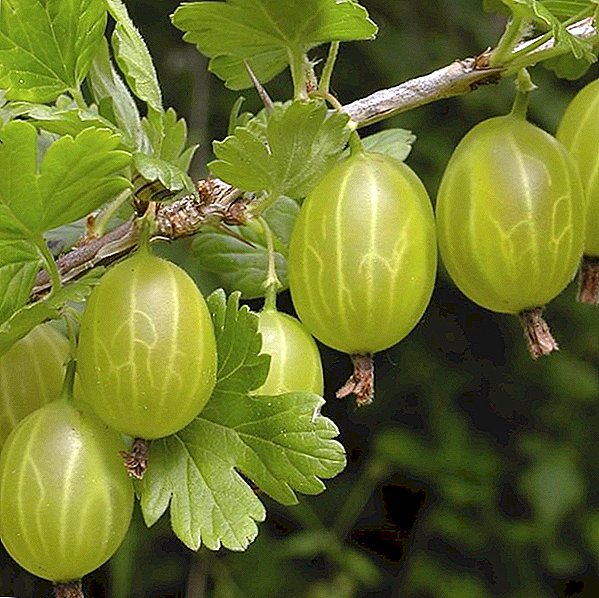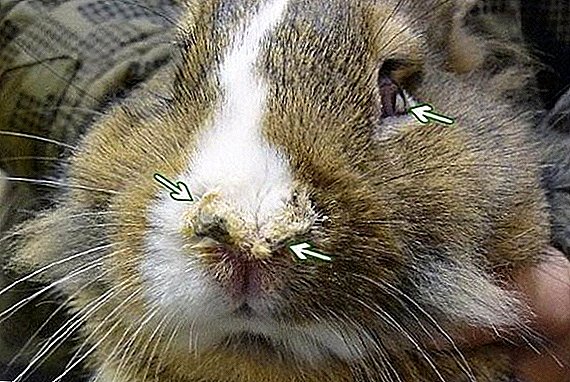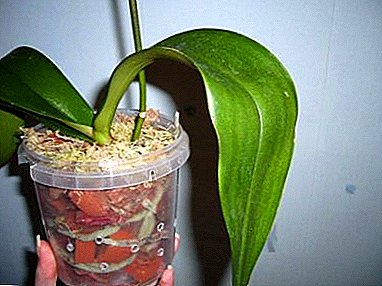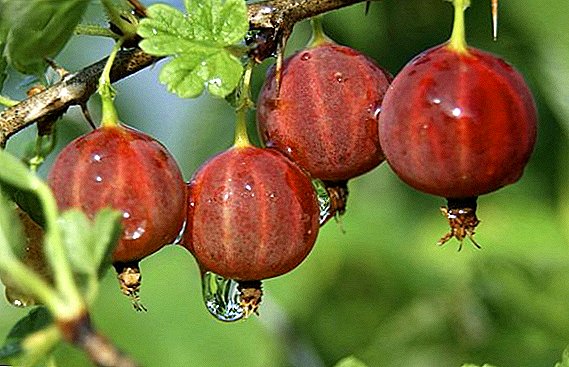 Gooseberry berry has long been known for its taste, healthy properties and versatility. Gooseberry has become one of the most beloved berries of gardeners and housewives. In order to collect large harvests of sweet berries, gardeners are trying to plant in their plot the best varieties of gooseberries without thorns.
Gooseberry berry has long been known for its taste, healthy properties and versatility. Gooseberry has become one of the most beloved berries of gardeners and housewives. In order to collect large harvests of sweet berries, gardeners are trying to plant in their plot the best varieties of gooseberries without thorns.
Did you know? In the 17th century, gooseberry was the most popular berry in Russia and was called bersen.
How are gooseberries classified
Gooseberries are classified according to the size of the bush:
- Medium - height of the bush 1 - 1.5 m: Gingerbread Man, Change, etc .;
- High - above 1.5 m: Chernomor, Phenicia, Malachite, etc.
- Medium - berries up to 5 g: Sadko, Kurshu Dzintars. Malachite and others;
- Large fruits - berries more than 5 g: Kolobok, Spring, etc.
Gooseberry Russian

Gooseberry variety Russian is often demanded by summer residents for their unpretentiousness.
Characteristics of a grade Russian:
- medium sized shrub;
- shoots abundantly dotted with thorns;
- ripe berries of red color and conical shape;
- fruits are sweet and sour;
- this variety is sensitive to gray rot and mites, especially strawberry;
- tolerates freezing and drought.
Gooseberry Russian yellow
 One of the most popular is the Russian Yellow gooseberry, the description of the variety is as follows:
One of the most popular is the Russian Yellow gooseberry, the description of the variety is as follows:
- a medium-sized bush, about a meter in height. It has sprawling branches and is distinguished by medium spikyness;
- berries of yellow color, weighing up to 6 g, a thin skin of average thickness and covered with wax;
- fruits are sweet, juicy;
- berries after ripening are not showered;
- yield from one bush to 5 kg;
- frost resistant;
- normally carries transportation.
Important! The sweetest gooseberry varieties are those with a sugar content above 17%, these include: Belarusian sugar, White nights, English yellow, Vladil, Lada, Cooperator.
African Gooseberry
 African variety is a type of gooseberry for summer cottages or garden plots with a humid climate. This variety is not afraid of powdery mildew, which can quickly spread in a humid environment.
African variety is a type of gooseberry for summer cottages or garden plots with a humid climate. This variety is not afraid of powdery mildew, which can quickly spread in a humid environment.
Features varieties African:
- medium-sized bush without thorns;
- resistant to frost;
- berries are black, large, juicy, sweet-sour, have currant aftertaste.
Gooseberry Grushenka
 The Gooseberry Gooseberry is a dessert gooseberry, bred by breeding. This name he received because of the pear-shaped berries.
The Gooseberry Gooseberry is a dessert gooseberry, bred by breeding. This name he received because of the pear-shaped berries.
The variety has the following characteristics:
- medium-sized bush, without thorns, with drooping branches;
- berries are medium, weighing up to 4 g, purple and pear-shaped;
- fruits are sweet and sour; juicy;
- fructifies a short period, medium late;
- tolerates cold and drought.
Gooseberry Kolobok
 Variety Kolobok was bred by crossing varieties Pink 2 and Smena in 1977. It quickly spread throughout Russia and the CIS countries.
Variety Kolobok was bred by crossing varieties Pink 2 and Smena in 1977. It quickly spread throughout Russia and the CIS countries.
This variety has the following characteristics:
- bush 1.5 m in height;
- berries are large, weighing 7 g;
- round-shaped fruits with thick skin, have a sweet-sour taste, contain ascorbic acid - 25 mg per 100 g;
- bears fruit for a long period.
Gooseberry Date
 One of the most popular varieties of gooseberry was the result of European breeding - the Phenic variety. It has a high yield and large berries. Phenicia, like other best varieties of gooseberry for the middle band, has become very popular due to its endurance and resistance to various diseases and pests.
One of the most popular varieties of gooseberry was the result of European breeding - the Phenic variety. It has a high yield and large berries. Phenicia, like other best varieties of gooseberry for the middle band, has become very popular due to its endurance and resistance to various diseases and pests.
Features of a grade:
- bush high, branches with thorns, sprawling;
- oval-shaped berries, dark red, sweet and sour, with dense skin;
- the weight of the berries reaches 15-20 g.
Did you know? The biggest disadvantage of the Phenice variety is its vulnerability in the fight against powdery mildew (spheroteca). To cope with this disease will help planting gooseberries in a sunny place, away from moisture and shaded areas.
Gooseberry Jubilee
 Variety Jubilee bred in 1965 by crossing Bedford yellow and Houghton. Characteristics variety Yubileyny:
Variety Jubilee bred in 1965 by crossing Bedford yellow and Houghton. Characteristics variety Yubileyny:
- medium thick, slightly sprawling bush;
- strong spiky shoots;
- leaf is medium, not pubescent, smooth;
- flowers are small, flattened;
- berries of medium size, weighing up to 5 g, oval, bright yellow, covered with a waxy coating.
Gooseberry Amber

During breeding by sowing seeds from free pollination of the gooseberry variety, English Yellow, which belongs to the European group Gooseberry Amber appeared.
He took all the best qualities from his ancestor:
- bush high - up to 1.5 m with spreading branches;
- berries are yellow-orange, oval, weighing up to 5 g;
- taste sweet and sour with honey aroma;
- the fruits hang on branches for a long time and do not crumble.
Gooseberry Hinnonmaki
Hinnonmaki gooseberry varietyGreen: 
- medium ripening, shoots with thorns;
- high yield - from 4 to 7 kg per bush;
- strong-growing, reaches 1.5 m in height, slightly sprawling bush;
- berries weighing up to 4-5 g, green, drop-shaped, sweet-sour.
Important! The Hinnonmaki variety will be better fruited in sunny places and on loamy soils.
Variety gooseberry HinnonMakiRed: 
- tall, dense bush (up to 1.5 m);
- high yield (7 kg from a bush);
- berries begin to ripen in early July;
- the berries are large, oval-shaped, deep red in color, sweet in taste and fragrant.
Gooseberry is one of the most versatile berries. In the gooseberry berries are many beneficial for the body of trace elements and vitamins. Gooseberry is perfect for fresh consumption, preparation of various desserts, stewed fruit and jam. It is also used to make jelly, candied fruit, sauces and even wine.












